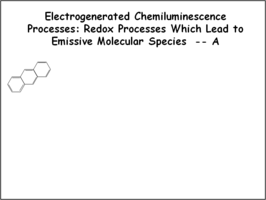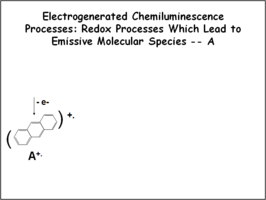Difference between revisions of "Help:Contents"
Cmditradmin (talk | contribs) |
Cmditradmin (talk | contribs) m |
||
| Line 1: | Line 1: | ||
{{Navbox with collapsible groups | |||
|name = ToC SideBar | |||
|style = width: 25em; text-align: left; font-size: 90%; border-collapse:collapse; background-color:#F9F9F9;border:1px solid #AAAAAA;clear:right;color:black;float:right;margin-bottom:0.5em;margin-left:0.5em;margin-top:1.25em;padding:1em; | |||
|title = [[Main Page|ChemPRIME]] | |||
|selected = {{{1|}}} | |||
|group1 = [[Introduction: The Ambit of Chemistry]] | |||
|abbr1 = ch1 | |||
|list1 = <p> | |||
*[[What Chemists Do]] | |||
*[[Handling Large and Small Numbers]] | |||
*[[The International System of Units (SI)]] | |||
*[[SI Prefixes]] | |||
*[[Measurements, Quantities, and Unity Factors]] | |||
*[[Errors in Measurement]] | |||
*[[Volume]] | |||
*[[Density]] | |||
*[[Conversion Factors and Functions]] | |||
</p> | |||
|group2 = [[Atoms, Molecules, and Chemical Reactions]] | |||
|abbr2 = ch2 | |||
|list2 = <p> | |||
*[[Macroscopic Properties and Microscopic Models]] | |||
*[[The Atomic Theory]] | |||
*[[Macroscopic and Microscopic Views of a Chemical Reaction]] | |||
*[[Testing the Atomic Theory]] | |||
*[[Atomic Weights]] | |||
*[[The Amount of Substance: Moles]] | |||
*[[The Mole]] | |||
*[[The Amount of Substance]] | |||
*[[The Avogadro Constant]] | |||
*[[The Molar Mass]] | |||
*[[Formulas and Composition]] | |||
*[[Balancing Chemical Equations]] | |||
</p> | |||
}} | |||
== Photonics Wiki Important Links == | == Photonics Wiki Important Links == | ||
Revision as of 12:31, 12 July 2010
Template:Navbox with collapsible groups
Photonics Wiki Important Links
Main Wikipedia How to Edit page
Note to Suzy for graphics suggestions
Note to Shaun for editorial or flash suggestions
Wiki Formatting Quick Guide
To enforce a break so picture stays with a text block
<br clear="all">
To embed an acrobat pdf file for slide series
<embed_document width="55%" height="400">http://depts.washington.edu/cmditr/media/OLED2_ecl_redoxpairs.pdf</embed_document>
Wiki Table
{| class="wikitable" |- ! header 1 ! header 2 ! header 3 |- | row 1, cell 1 | row 1, cell 2 | row 1, cell 3 |- | row 2, cell 1 | row 2, cell 2 | row 2, cell 3 |}
| header 1 | header 2 | header 3 |
|---|---|---|
| row 1, cell 1 | row 1, cell 2 | row 1, cell 3 |
| row 2, cell 1 | row 2, cell 2 | row 2, cell 3 |
To make a heading that automatically gets assembled as table of contents when there are more than 3 such headings.
===Heading===
Page Bookmarks and Links
To put in an anchor so you can point to place ("Flash" in sample below) in a pages
<div id="Flash">Text that is displayed </div>
And use this construction to link to this bookmark, using the page and the # to denote the id.
[[Organic Heterojunctions in Solar Cells#Flash | Flash Simulation of Exciton Diffusion]]
Image gallery with individual captions
<gallery widths=300px heights=200px perrow=3> Image:Oled1_3_eclredox.png|First the loss of an electron by this conjugated aromatic system to form a cation radical species. Image:Oled1_4_eclredox.png|Comment for sec </gallery>
Embed Latex formula and force png rendering
:<math>\eta _\mathrm{ext} = \eta_\mathrm{ph} \eta_\mathrm{int} = \eta_\mathrm{ph} \gamma \phi \eta_\mathrm{ext}\,\!</math>
- <math>\eta _\mathrm{ext} = \eta_\mathrm{ph} \eta_\mathrm{int} = \eta_\mathrm{ph} \gamma \phi \eta_\mathrm{ext}\,\!</math>
To put mid size picture in the scene with caption
[[Image:OLED5-organic_heterojunction.jpg |thumb||400px | Organic Heterojunction]]
Category
This creates a category so that articles can belong to more than one classification
[[category:organic solar cell]]
Embed Flash in page
<div id="Flash">Four kinds of polarization animation</div> <swf width="500" height="400">http://depts.washington.edu/cmditr/media/opvanim.swf</swf>
The div id makes it possible to point to the flash at a particular place on page in another link.
Photonics Wiki Showcase#Flash_Simulations
References
see this [1]
== References == <references/>
- ↑ put your citation in text and it copies it below.
Knowledge Check
Try your hand at these problems about basic paratmeters of light. <quiz display=simple> {Which part of the electromagnetic spectrum has the most energy? |type="()"} - Violet light. || Feedback for correct answer. + X-rays. || Feedback for distractor. - Infrared. || Feedback for distractor. - Radiowaves. || Radiowaves have very long wavelengths .
</quiz> main_alt
Latex for formulas
Embed Youtube video
{{#ev:youtube|M3no-TFORpQ}}


